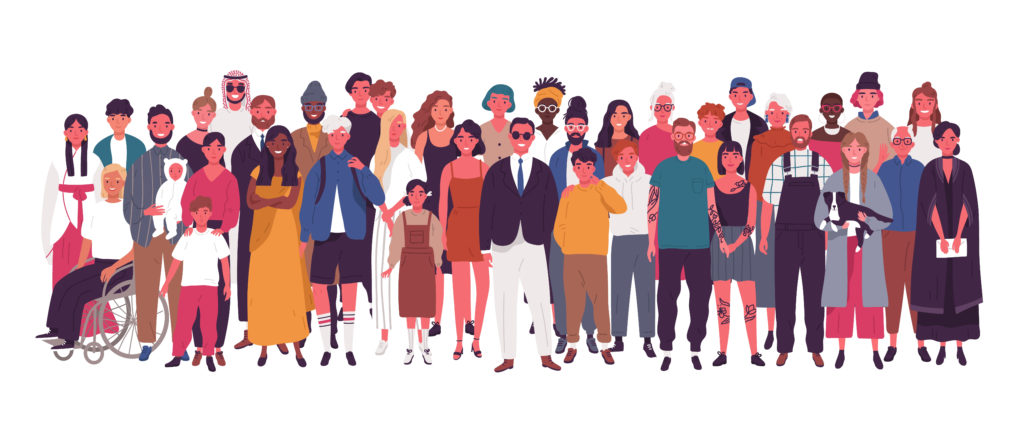
Multicultural education is a concept that has evolved and adapted over time. Its main purpose, as mentioned by the University of Washington’s College of Education, attempts to create equal educational opportunities for all students. Multicultural education focuses on the diversity of a society, and an educational structure, and attempts to reflect this diversity.
Therefore, Educational institutions, and curriculum creators, enlist a variety of different techniques to meet multicultural education needs. Common multicultural concepts, as identified by Dr. James A. Banks, include the five dimensions of multicultural education. Of these five dimensions, reducing prejudice, increasing equity, and empowering school culture and structure are the more socially focused concepts. However, there is also an identified need to include content integration.
Using content integration to help with multicultural education includes providing educators with opportunity to expose students to a variety of cultures. As education product developers and publishers, creating content that clearly and deeply reflects cultural diversity helps to meet this need.
However, simply providing students and educators with multicultural content options is not enough. To fully meet the need for diversity, content must reflect a full range of diversity. The only way to meet this need is to provide as many options as possible.
So how can education product creators help with multicultural content integration? Here is a closer look at some ideas to consider when choosing content.
Put Diversity in the Curriculum
In an interview, Dr. James A. Banks mentions that including diversity directly in the curriculum is the first step. Since curriculum and educational products are the foundation for all education, including clear representation directly in the content is essential. However, this is not just for the subject areas that seem easily achievable. Including diversity in content in as many subject areas as possible allows for more relatability for all students.
Additionally Dr. Banks also points out that simply identifying representations of minorities, women, or other cultures in a subject areas is not truly multicultural education. This is where the depth and authenticity of the content is essential.
Utilize Realistic and Authentic Multicultural Education Content
Authenticity is the key to truly using content to help with multicultural education. In a paper by Reeba Sara Koshy, Koshy emphasizes that multicultural content should be as inclusive as possible. Koshy also mentions that multicultural content can be corrupted by the creators of education content, curriculum, and even the educators who use it. For this reason, curating exceptionally authentic multicultural content is extremely important.
According to Koshy’s study, authentic content includes descriptions of “histories, texts, values, beliefs, and perspectives” of different cultures. Texts and other assets should accurately represent the cultures present in the content. Publishers and product creators should work with writers and content creators who are knowledgeable of the cultures in question. Even more specifically, the content should come from individuals who represent the cultures.
The need for products to include authenticity has led MOSAIQ’s CurationIQ to include authenticity tagging to all of the content included on the platform. These tags include multicultural art, multicultural text, or both multicultural text and art. Content is also tagged for main character gender and ethnicity, and topic tagging for inclusion and equity.
Multicultural Education Content Needs Variety
Just like with all content needs in education, students need choice and variety in multicultural content. We discuss this concept in our post on how students become disengaged with content found here. However, it can sometimes seem overwhelming to try and include as many different cultures in a product or curriculum as possible. In fact, it can be almost impossible to conceive.
Another difficulty with including a variety of cultural texts is to be able to fully understand and interpret the texts for students. The ability to curate content from different publishers who specialize in cultural texts helps with providing this variety. Publishers who provide truly authentic cultural content often have supplemental texts or detailed author information. These extra details help with content comprehension and in sharing the content with students.
MOSAIQ’s CurationIQ bridges the gap between truly authentic publishers and educational products. The platform includes publishers such as Arte Público Press, Lee & Low, and Little Brown, and Company. All of these publishers, and many others on the platform, publish multicultural books and assets. By engaging students in these authentic publications, product developers provide students with the variety they crave.
Include Multicultural Content at Many Levels
James A. Banks’ research in multicultural content integrationincludes four different levels of integration. When choosing content for products, it is important to try to cover as many levels as possible. Banks mentions that this goes beyond representing a culture during a specific holiday or commonly identified time.
Other opportunities to include multicultural content are as an addition to current curriculum. This means including multicultural texts to further concepts in the preestablished curriculum. Banks identifies this as the first step to transforming a curriculum to be all-inclusive. The final level is to use diverse texts as social action in education.
These concepts are just the beginning of how, and why, content should be used in multicultural education. As with all types of education content, access to a catalogue of publishers can open the door to diversifying content. Education product creators can make products more valuable to educators and parents by widening their content libraries. CurationIQ provides a catalogue of publishers and content to browse that meet multicultural content needs. To get more information on the types of content available, register to get a free login to see the content available. What cultural content needs do you or your product have? Share them with us in the comments.
